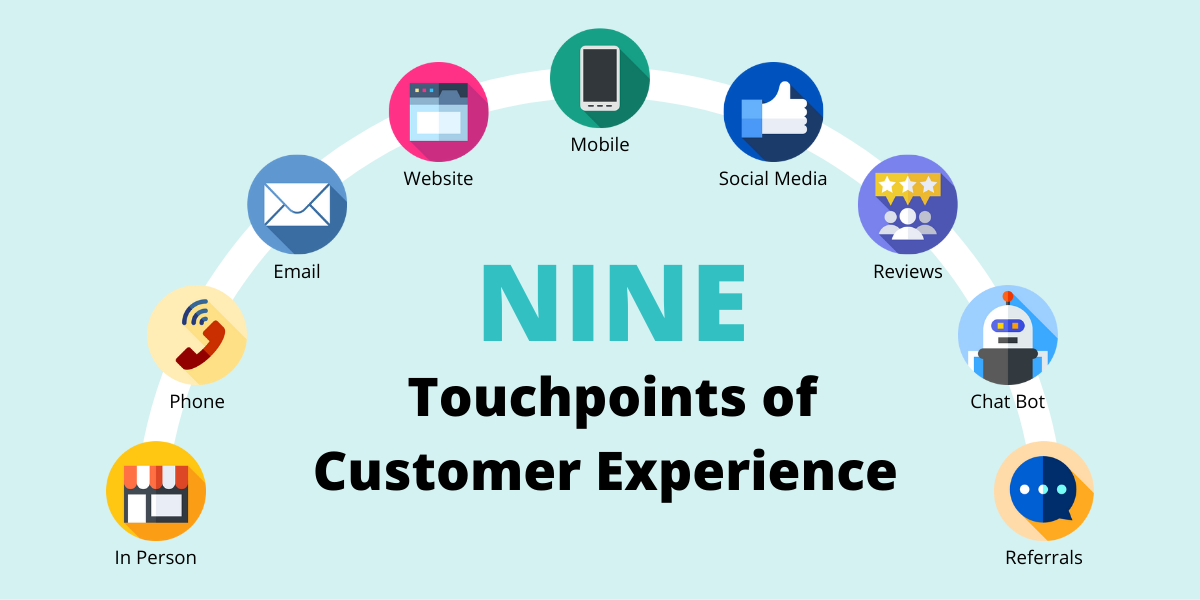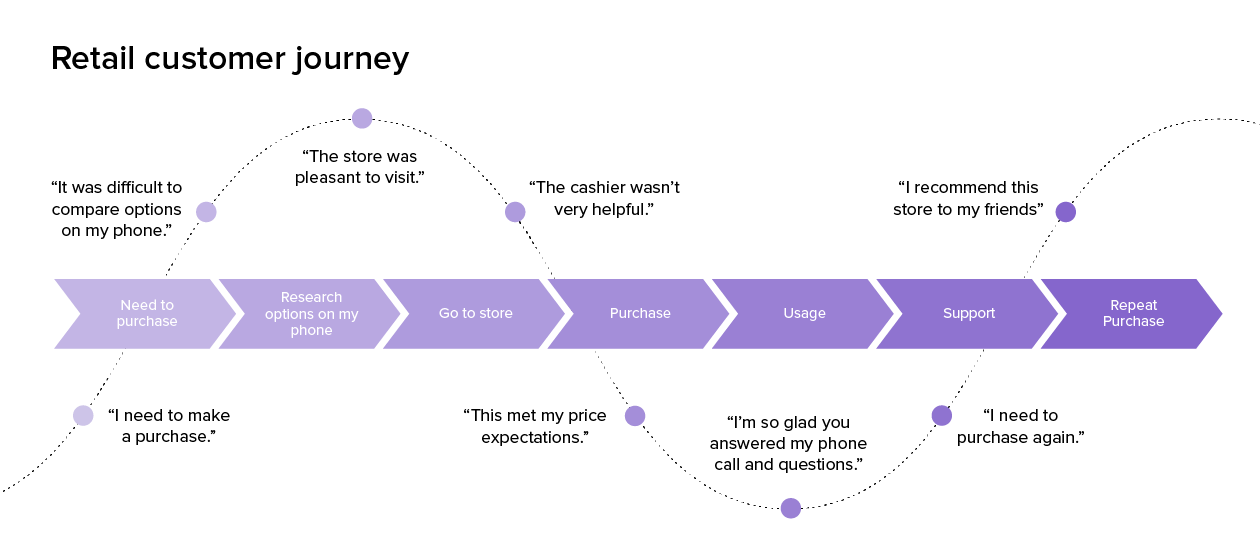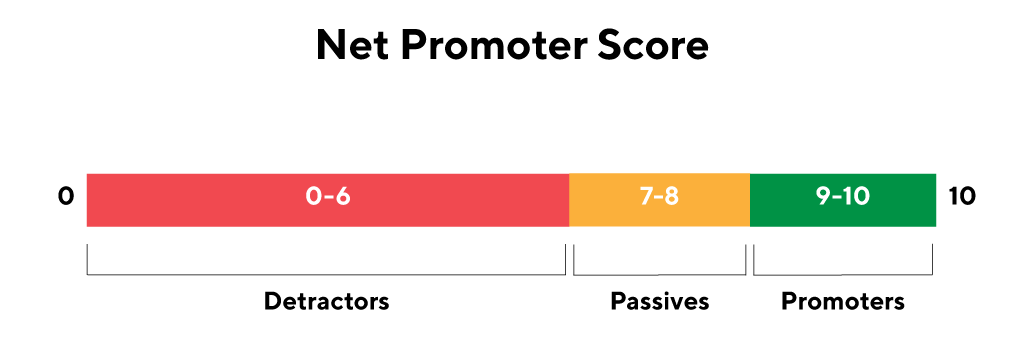What Is Customer Experience and Why It’s Important

Our customers have more power than ever. They have more access to competitors, a greater ease of switching and more influence through social media and online reviews. That’s why the best marketing money can buy is a customer who will promote your business.
We sat down with Gary Tomcik, who’s had over 30 years’ experience cultivating customer experiences for organizations, to discuss why the customer experience is so important for your business and how to create a customer journey that will wow your consumers. To listen to the entire episode, click the play button below, or keep reading to learn how you can create a great customer experience for your organization.
What is customer experience?
According to Zendesk, the Customer Experience (CX) is everything related to a business that affects a customer’s perception and feelings about it. This includes everything from researching to pre-purchase, the actual consumption and even post-purchase of the product or service. It focuses on the relationship between a business and its customers, and includes every interaction, no matter how small, even if that interaction did not result in a purchase.
The customer experience can be a phone call to ask when your store closes, exposure to a billboard on the side of the road or even something as simple as paying an invoice. Every interaction, or touchpoint, between customers and businesses can build or damage that relationship. Here are the nine most common touchpoints that every business should focus on:
- In Person – Any interaction you or your employees have with a customer.
- Phone – Any conversation you or your employees have with a customer over the phone.
- Email – Includes automated and personalized messages sent to your subscribers.
- Website – Often the first impression of a users customer experience.
- Mobile – How your website or business information is displayed from a mobile phone.
- Social Media – How a customer or potential customer engages with all of your social media platforms.
- Reviews – Ratings left by consumers on search engines or reviews on social media platforms.
- Chat Bots – Self help or automated messaging designed to interact with potential or current customers.
- Referrals – Any interactions that your existing customers have with potential customers.

Why is customer experience important?
Customer satisfaction is more important now than ever before. Delivering a great customer experience is hugely important for any business. The better experience customers have, the more repeat customers and positive reviews you’ll receive. If a user has a positive customer experience, it will also reduce the friction of future complaints and returns.
The main goal is to create a consistent customer experience across all touchpoints to exceed you and your customers’ standards. By keeping an eye on the entire customer experience, you’re making sure that the promise of a positive experience is being kept and that you’re offering a superior service to your customers.
Increased revenue
It’s not rocket science that a happy customer will spend more money. A totally satisfied customer contributes 2.6 times as much revenue as a somewhat satisfied customer, and 14 times as much revenue as a somewhat dissatisfied customer. Not only that, but satisfied customers are more willing to try new products and services, which translates to more upsells.
Increased customer loyalty and satisfaction
Creating a great customer experience really impresses customers and ensures that they will keep doing business with you again and again. A superior customer experience becomes a valued and unique asset for any business or organization. Investing in your existing customers will pay off and it’s only a matter of time until you see positive results.
Today’s customers have all the power
Today, customers have the power, not the businesses. Customers have endless options to choose from at their fingertips, plus the resources necessary to educate themselves and make purchases on their own. This is why it’s so important to provide a remarkable customer experience and make them want to continue doing business with your organization. Customers are your best resource for growing your brand awareness.
Creating a community of advocates
Word of mouth marketing is one of the most powerful tools any company or organization can wish for. The truth is, 84% of consumers don’t trust traditional advertising anymore. People are now constantly looking at online reviews and a brand’s social media page before making an online purchase, and that’s why customer advocacy is so important.
By focusing on creating a great experience and going above and beyond for your customers, you’re creating an advocate out of every consumer.
How do you make a great customer experience?
One thing is for sure, a good customer experience can help drive the success of a business. But loyalty isn’t given, it’s earned, and without the right strategy, it’s easily lost.
Receive feedback during the customer experience
Customer feedback provides insight into customers’ expectations, and how they might change over time with changes in your industry. It can also tell you where customers are getting stuck and what’s working well. The key is to acknowledge your feedback, no matter how negative it might be, and do your best to act upon it.
Employees and staff can help collect customer feedback and provide insight into what’s making it difficult for them to deliver great customer service, such as outdated policies or slow processes that don’t suit customer needs and lead to a slow resolution of a customer issues.
Understand your customer journey
The most important part of creating a great customer experience is understanding the entire journey a customer takes. You need to think about your customer journey from start to finish, including before your first interaction, and long after your customer has left. This will help you understand every touch point that you have with your customers. From there, you can focus on how to make each of these touchpoints as positive for the customer as possible.

Test your website’s usability and mobile experience
It doesn’t matter how effective your product or service is if your customers can’t navigate their way around it. Your website should be intuitive, making it clear to the user which steps they need to take to achieve their goals. You also need to make sure that your website is responsive and mobile friendly, as over 56% of all traffic on the internet comes from a mobile device.
Additionally, the mobile version of your website should be as effective as your desktop version. A customer should be able to accomplish the same amount of tasks using the same amount of clicks as a traditional device.
Customer onboarding
For some companies, customers need to be taught how to use their product or service. Not everyone is tech-savvy, and many businesses provide onboarding to new users who aren’t familiar with their products or services.
Onboarding is the process of teaching new customers how to use your product or service. It’s a great way to nurture your relationship and ensure they understand the value and purpose of their purchase. This way, customers don’t have to go through a time-consuming learning curve and can get value from your business right away.
How do you measure your customer experience?
There’s no single magic number to measure your customer experience. Customer experience is hard to measure, so the more data you have, the better. The first place you can start is by making sure you are collecting as much data from your customers as possible. Website analytics, event registrations and recent product purchases are all great analytics to start collecting.
Analyze customer surveys
A great way to measure customer experience is by using the Net Promoter Score or NPS. This measures how likely your customers are to promote you to their friends, family and colleagues based on their experiences with your company.

Analyzing your Net Promoter Score from multiple touchpoints across your customer journey will tell you what you need to improve on and where you’re already providing a great experience. It will also show your customers that you’re listening to them and care about what they have to say.
Utilize focus groups
A focus group is a small group of people in your target market who meet for a guided interview about your business. The individuals who make up the focus group should be a mix of current customers and people who’ve never made a purchase from your business, but might in the future. The ideal outcome is a stronger understanding of how the subject of the focus group would be received by a wider audience, and what changes should be made.
If you’re going to hold a focus group for your business, it’s a great idea to reach out to your existing customers, since they will likely be the first to provide feedback on an existing product or service. It’s always a good idea to offer an incentive, like a free or discounted service, to reward your customers for providing valuable feedback.
Ask customers for product or feature requests
Create a place or forum for your customers to request new features to make your product or services more useful and helpful. An example could be an email survey, a social media post or even a landing page to give your customers the opportunity to offer suggestions. This doesn’t mean you must implement all of the suggestions you receive, but it will allows you to see if there are recurring issues that might be worth investing time in.
Analyze customer support tickets or conversations
Quantitative data can provide valuable insights on your customer experience, but often times can fail to explain the why that describes customer behavior. Analyzing qualitative data, like your customer support conversations, can play an important role to understanding these reasons, or the why, behind your metrics and scores.
What aspects of your customer experience are the most frustrating for your customers? What are their most frequent complaints? What questions do they continue to ask over and over? Looking at qualitative data provides your business with an in-depth knowledge of your customers’ problems and hopefully, the best way to solve them.
Learn More
If you’d like to hear more from local industry experts about digital marketing, social media, technology and business development, check out our most recent podcast episodes here. To learn more about how SWFL Inc. can help grow your business, send us a message here.
